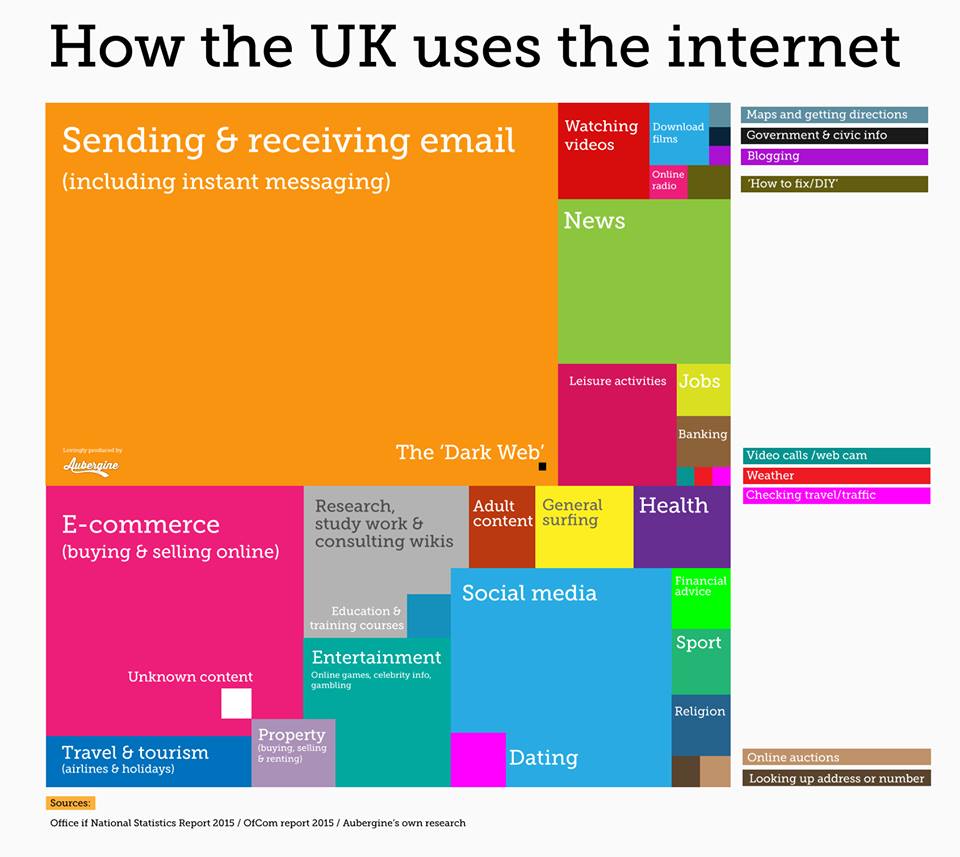How the UK uses the Internet
Everyone now and again it’s worth standing back and taking stock. This applies to most things in life as we continue on day-by-day assuming we know something well that’s right under our nose. However, nothing better represents this theory than The Internet. By its own definition, it changes every millisecond of the day, every day of the year but that doesn’t stop us drawing some assumptions as to how it’s used and of what it consists.
So, we’ve trawled annual reports issued by ISPs, the Office of National Statistics and Ofcom and come to the conclusion that what we ‘think’ we know about how the UK uses the internet is a little off the mark.
It’s long been said in popular media that the internet is just full of, well, ‘adult content’ and nonsense. However, we think that as the internet becomes governed more by commercial and corporate entities, what was a digital wild west has now grown up a little and shows signs of being a bit more organised and used for lifestyle improvement, business development and advances in technology and communication as well as learning.
To help guide you through the graphs and sheets of data received from the various ISPs, government offices and ombudsmen, we’ve produced this infographic to help give you some idea of how the UK uses the internet and the sorts of content that is out there.
And there are some surprises – both good and bad
The first being just how much email makes up the biggest chunk of online usage. The next is how social media plays such a large part in a lot of online activity. One surprise, and a change on previous years, is the adult content that has be prevalent for many years – this appears to be heavily reducing.
On the rise are the areas of News, Watching Videos/Entertainment, E-commerce and Travel/Tourism. However, one area that’s particularly interesting is the size of usage attributed to Research. As we all know, the internet was popularised as the child of Sir Tim Berners-Lee. However, it had its origins in the halls of research in US universities and research establishments that were connected to Government and defence – known as ARPANET. This early network of connected computers was created to share information from one research site with another – sometimes from one side of the US to the other.
And so to see a resurgence in the amount the internet in the UK is used for research and study is a good thing and we would hope that this is as a result of more and more children using the internet to study online.
Other areas showing up in the graphic for the first time are those of Maps and Directions (as a result of more uses relying on their mobile devices and native map apps delivering them to their destination), Dating – which is also a surprise but perhaps a result of us living our lives more and more online.
The last two areas worth briefly discussing are those marked as ‘Unknown’ and ‘The Dark Web’. Although very small when compared to the likes of ‘Email’, the very fact that it is not known what makes up the content or use in these two sectors shows that technology is ever-more being used behind which to hide.
Summary
So what does all this mean? Well, what it shows is how changes in society and culture and the way business is done affects how the technology is used. What we’re seeing here is a rise in the use of technologies such as, video/web cam calling and map and geo-controlled services – all of which are being integrated with new hardware. Other areas that show promise of an increase of use are online property services – buying, selling, renting etc and the Government/Civic sites and how they are moving towards all their communications about services being delivered online.
In a way, the way UK uses the internet is a reflection of how our culture and society are changing and becoming and ever-more digitally connected society. Afterall, the best way to find out where your kids are in the house is to switch off the router – they’ll appear from nowhere is seconds.


